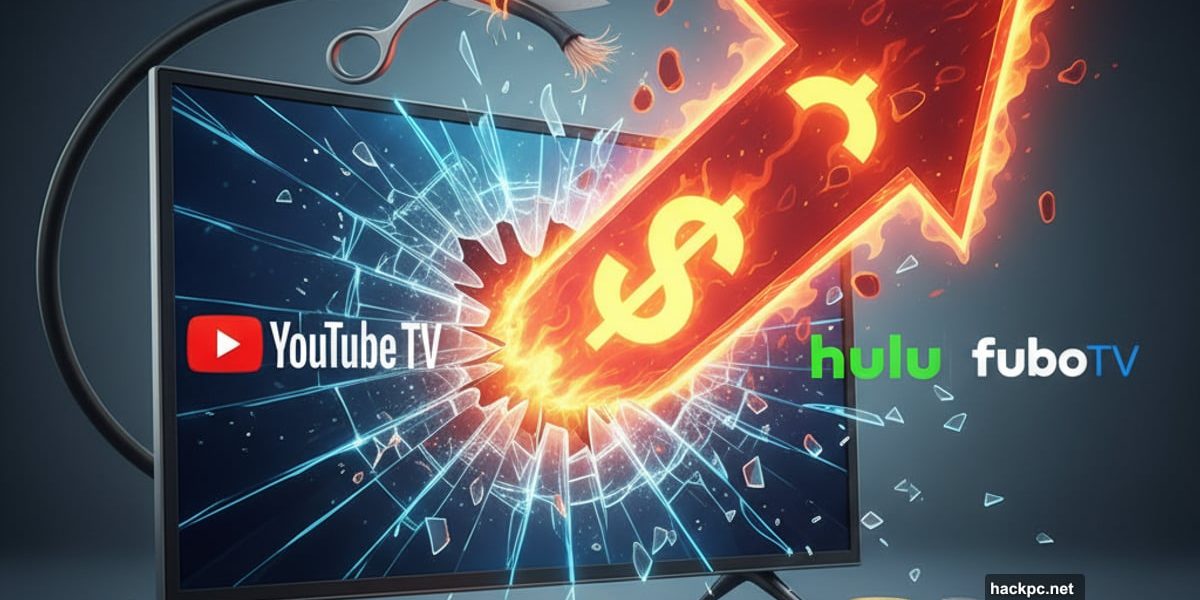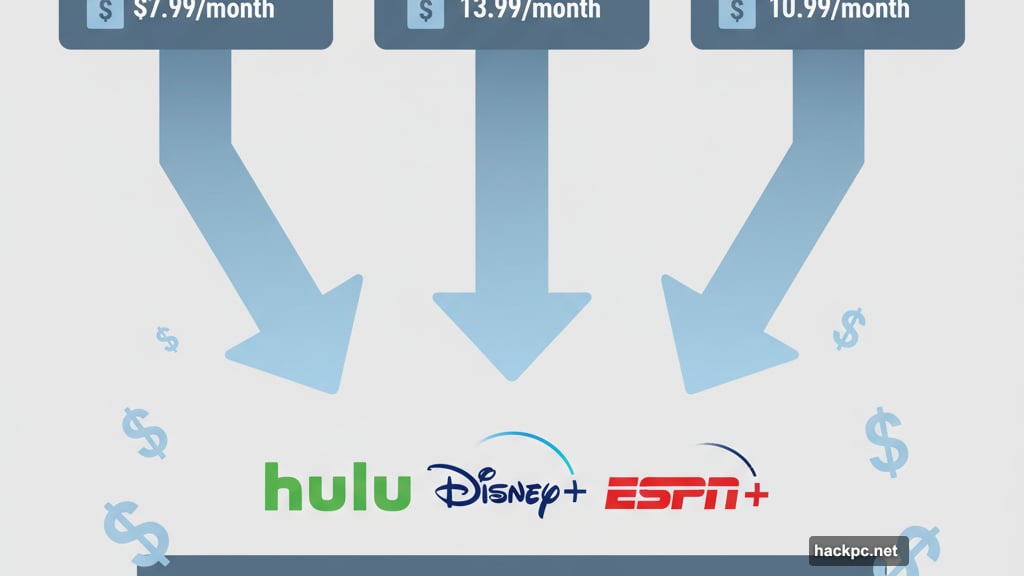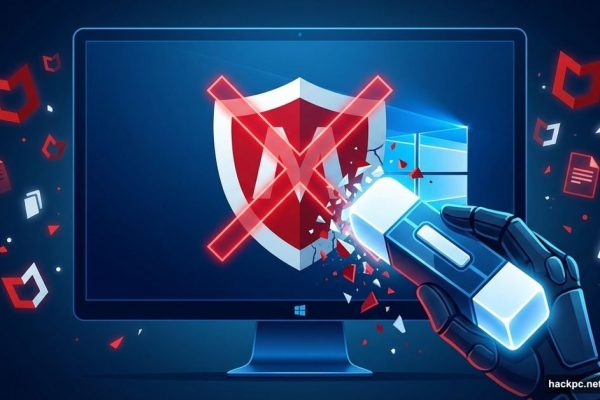
Live TV streaming used to mean cutting your cable bill in half. Not anymore.
Most major services now charge over $80 monthly. Some exceed $90. That’s dangerously close to what traditional cable costs – except you’re providing your own internet connection and equipment.
So what happened? And more importantly, which services still justify the price tag? I tested every major live TV streaming platform to find out.
YouTube TV Still Leads Despite Disney Blackout
YouTube TV remains the smoothest experience for most viewers. The interface feels intuitive. Search actually works. Plus, you get unlimited DVR storage that lasts nine months.
But there’s a massive caveat right now. All Disney-owned channels went dark in December 2024 after contract disputes. That means no ESPN, ABC or Disney Channel. Google offered a $20 monthly credit to compensate, but the situation highlights streaming’s fragility.
Despite the blackout, YouTube TV delivers the best overall package. The multiview feature lets you watch four sports channels simultaneously. The key plays feature automatically edits game highlights. And the navigation makes finding content effortless.
Just remember that $83 base price is deceptive. Add-ons lurk everywhere. Max, Showtime and themed packages tempt you constantly. I could easily see bills creeping past $150 if you’re not disciplined.
Fubo Dominates Sports Coverage
Sports fans have a clear winner: Fubo at $85 monthly.
The service carries 118 sports networks in its top-tier plan. That includes regional channels, international leagues and niche sports you didn’t know existed. You can even add NBA League Pass for $17 extra.
Fubo’s newest budget option, Fubo Sports at $56 monthly, targets football fans specifically. It bundles 20 sports and broadcast networks including ABC, CBS, Fox and ESPN stations. For college and pro football, this covers most games you’d want to watch.

The multiview feature expanded recently too. I tested it with a Roku device and watched four different channels at once – two NCAA games, local news and a CSI rerun. Previously, this only worked on Apple TV boxes.
Missing channels? TBS and TNT. Those networks carry some NBA, MLB and NHL games. Still, Fubo’s sports depth crushes competitors.
Hulu Bundles Content But Raises Prices Again
Hulu + Live TV hit $90 monthly in 2025. That’s up from $83 the year before and $77 the year before that.
The service keeps raising prices but sweetens the deal with bundled content. You get Disney+, ESPN+ and Hulu’s original programming included. So if you already pay for those separately, consolidating makes financial sense.
However, the interface feels clunky. Live TV seems shoehorned into the regular Hulu app rather than built natively. Navigation frustrates compared to YouTube TV’s polish.
Plus, everything’s in flux. Disney announced plans to merge Hulu with Disney+ in 2026. Hulu also merged with Fubo. Nobody knows how these changes will affect pricing or features yet.
DirecTV Transitions From Satellite To Streaming
DirecTV rebranded in April 2024. Streaming became the primary offering while satellite service got buried in the website.
The company now pushes contract-free streaming packages ranging from free to $170 monthly. You can choose signature packages similar to YouTube TV or slimmed-down genre packs focusing on sports, entertainment or news.
The $85 Entertainment Signature Package matches YouTube TV’s $83 base fairly well. You get local channels, most top cable networks and unlimited DVR. Subscribers also get access to ESPN’s service once it launches.

But DirecTV feels dated. The interface uses plain grey and blue tones that lack personality. Navigation runs slower than competitors. And the Gemini Air streaming device costs $10 monthly instead of a one-time purchase – which feels like a bad deal after five months.
Still, DirecTV most closely resembles traditional cable with numbered channels and familiar navigation patterns. Older viewers may appreciate that continuity.
Sling Lets You Customize Everything
Sling TV takes a different approach. Instead of one base package, it splits offerings into Orange and Blue plans with different channels on each.
Orange costs $46 monthly and includes ESPN networks – making it the cheapest way to access those sports channels. Blue runs $51 and carries more total networks. You can combine both or add themed packages for news, lifestyle or kids content.
Sling also introduced day passes in August 2025. Watch Orange plan channels for just $5 daily. Weekend and week-long passes are available too. Disney and Warner Bros Discovery sued over these short-term offerings though, so they might disappear.
The customization appeals to budget-conscious viewers who want exactly what they watch without paying for extras. But piecing together your ideal package takes effort. And DVR limits are stingy at just 50 hours versus unlimited storage elsewhere.
Philo Keeps Prices Low By Skipping Sports
Philo increased to $33 monthly in late 2025 after adding HBO Max and Discovery+ access. Even with that bump, it remains one of the cheapest options.
The tradeoff? No sports programming and no local stations. If you only care about entertainment networks like AMC, HGTV and Food Network, Philo delivers solid value.
The interface is clean and minimalist. DVR limits are generous – unlimited storage that lasts a full year versus nine months elsewhere. And around 170 total channels means plenty to watch.
Just know you’re sacrificing news coverage and all sports content for that lower price.

Free Streaming Options Expanded
Several free ad-supported services launched or expanded recently. Tubi shows a couple hundred live channels including regional Fox stations and news streams. Plex added user reviews and improved search. Sling Freestream bundles 400-plus channels of free content.
These options work well for casual viewers who don’t need comprehensive channel lineups. You’ll sit through more commercials. And you won’t get premium content or major sports. But for zero monthly cost, they provide surprising value.
Smart TV operating systems also bundle free content now. Amazon’s Fire TV, Google TV, Roku’s built-in channel and Samsung TV Plus all offer hundreds of stations at no charge.
NFL Games Require Strategy
Watching all NFL games demands planning. Rights are split across CBS, Fox, NBC, ABC, ESPN, Prime Video, Netflix and the NFL Network.
Most paid services cover CBS, Fox, NBC and ABC through local affiliates. YouTube TV’s NFL Sunday Ticket add-on costs $35 to $115 monthly depending on your subscription type. That covers Sunday afternoon games but not Sunday night matchups.
The cheapest path? Combine a digital antenna ($20 to $60 one-time cost) for local broadcasts with strategic free trials during key games. Or visit your local sports bar.
Streaming Isn’t The Bargain It Once Was
Live TV streaming promised cord-cutters freedom from cable bills and contracts. Mission accomplished on contracts – you can cancel anytime.
But prices now match or exceed traditional cable in many cases. YouTube TV costs $83. Fubo runs $85. Hulu + Live TV hits $90. Add a few extras and you’re paying $120 or more monthly.

Cable companies fought back too. Many now offer streaming packages without contracts or equipment fees. The gap between “cutting the cord” and sticking with cable keeps shrinking.
Smart Strategies For Saving Money
You can still save compared to cable with careful choices. Here’s how.
Pick one service and resist add-ons. YouTube TV’s base $83 plan covers most needs. Don’t add Max, Showtime or premium channels unless you’ll actually watch them.
Use free trials strategically. Nearly every service offers trials ranging from three days to a week. Rotate between services to catch specific games or shows without paying.
Combine streaming with an antenna. Spend $30 once on a digital antenna and receive local ABC, CBS, Fox and NBC broadcasts free forever. Then subscribe only to services carrying cable networks you can’t get otherwise.
Share accounts where allowed. Most services permit two to three simultaneous streams. Split costs with family or roommates to halve your monthly bill.
Cancel during off-seasons. If you only watch during football season, cancel subscriptions from February through August. Or keep Philo year-round for $33 and add sports packages seasonally.
The Real Problem Everyone Ignores
Streaming companies designed pricing to maximize revenue, not your savings. Sound familiar? That’s exactly what cable companies did.
But here’s what frustrates me most. They market “no contracts” and “pay only for what you use” while making it nearly impossible to predict actual costs. Add-ons lurk everywhere. Prices increase annually. And determining which service has which channels requires spreadsheets.
The cord-cutting revolution just replaced one set of frustrations with another. You’ll save money over cable. But only if you stay vigilant about what you’re paying for and resist the constant temptation to add more.



Comments (0)